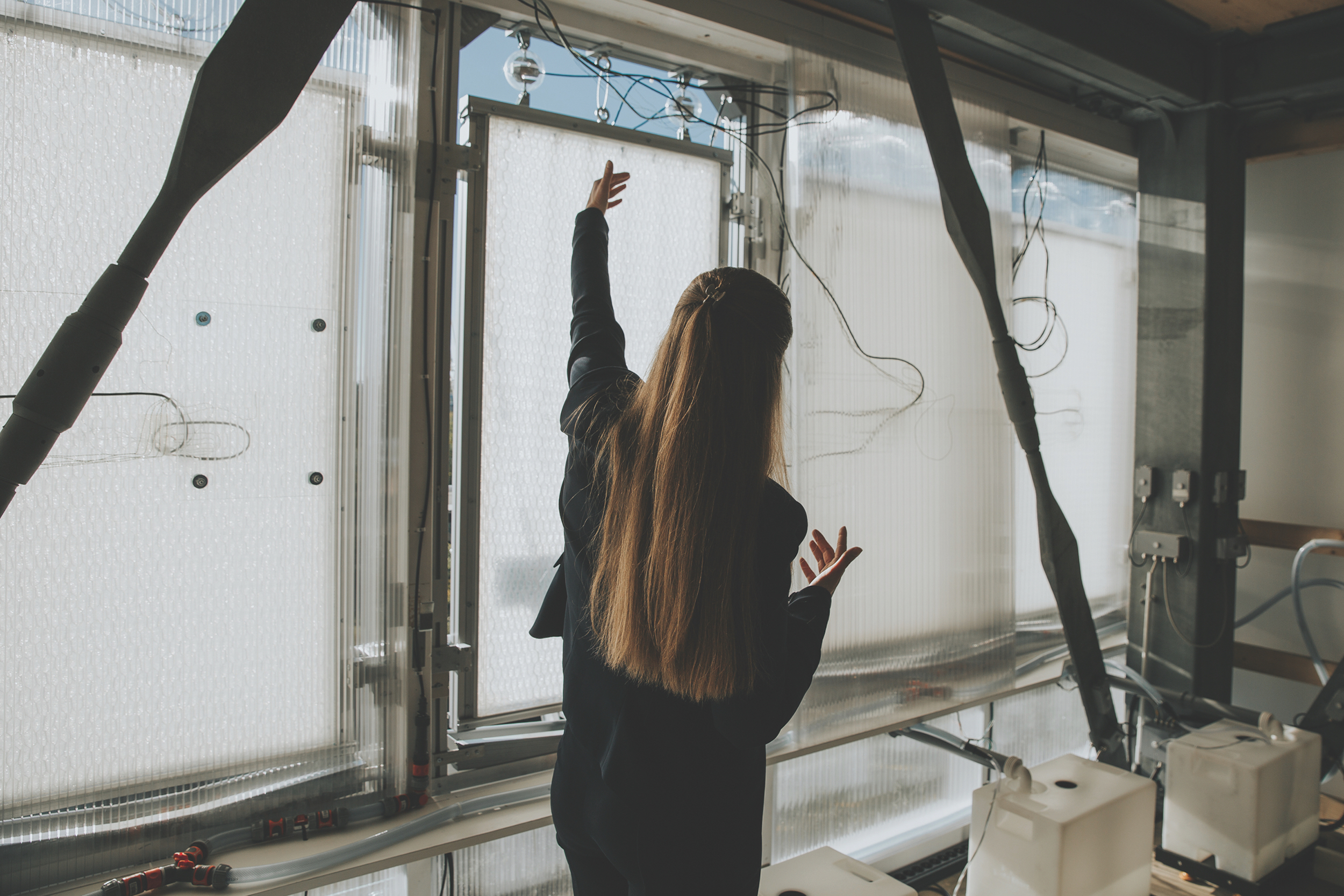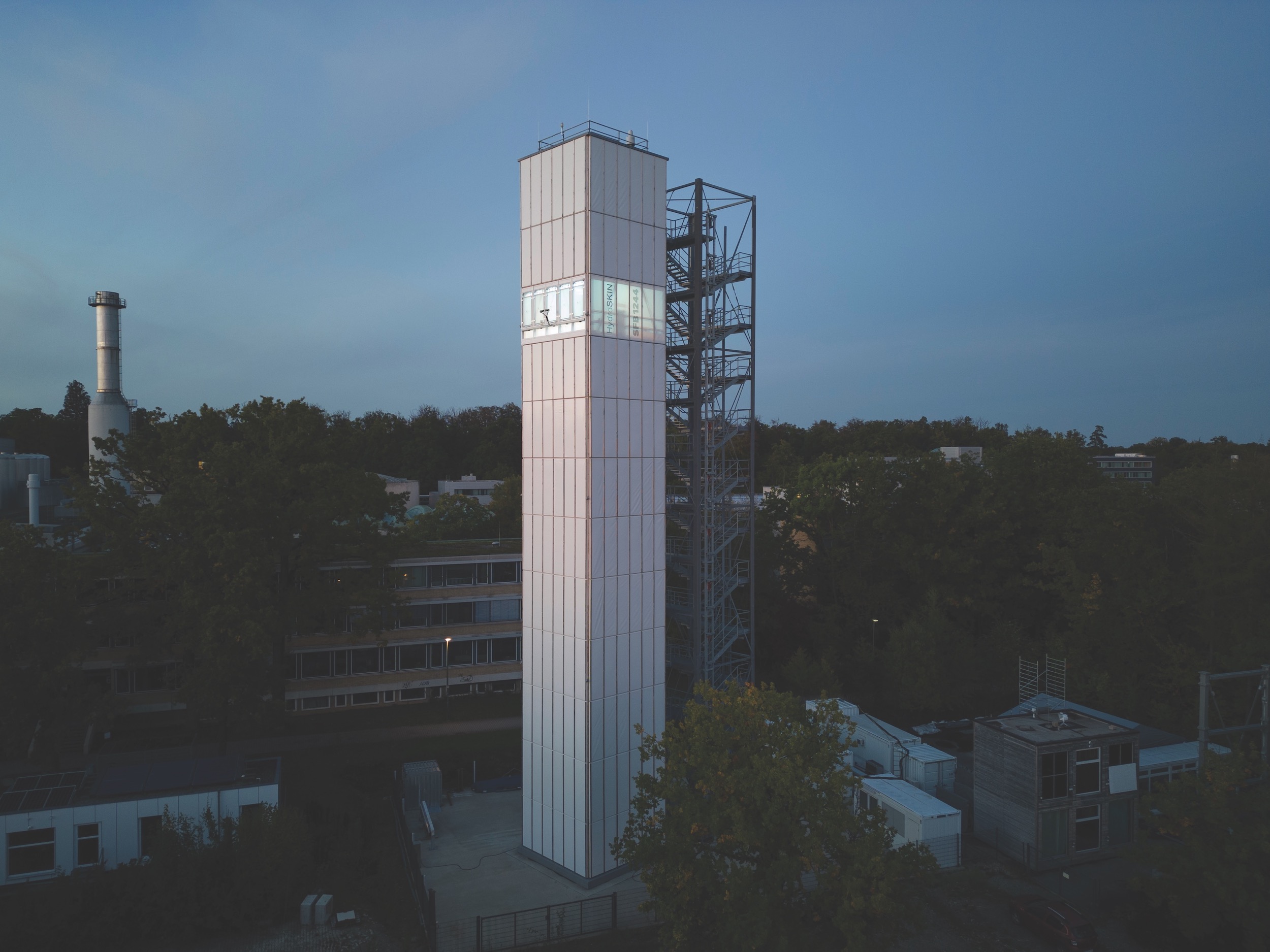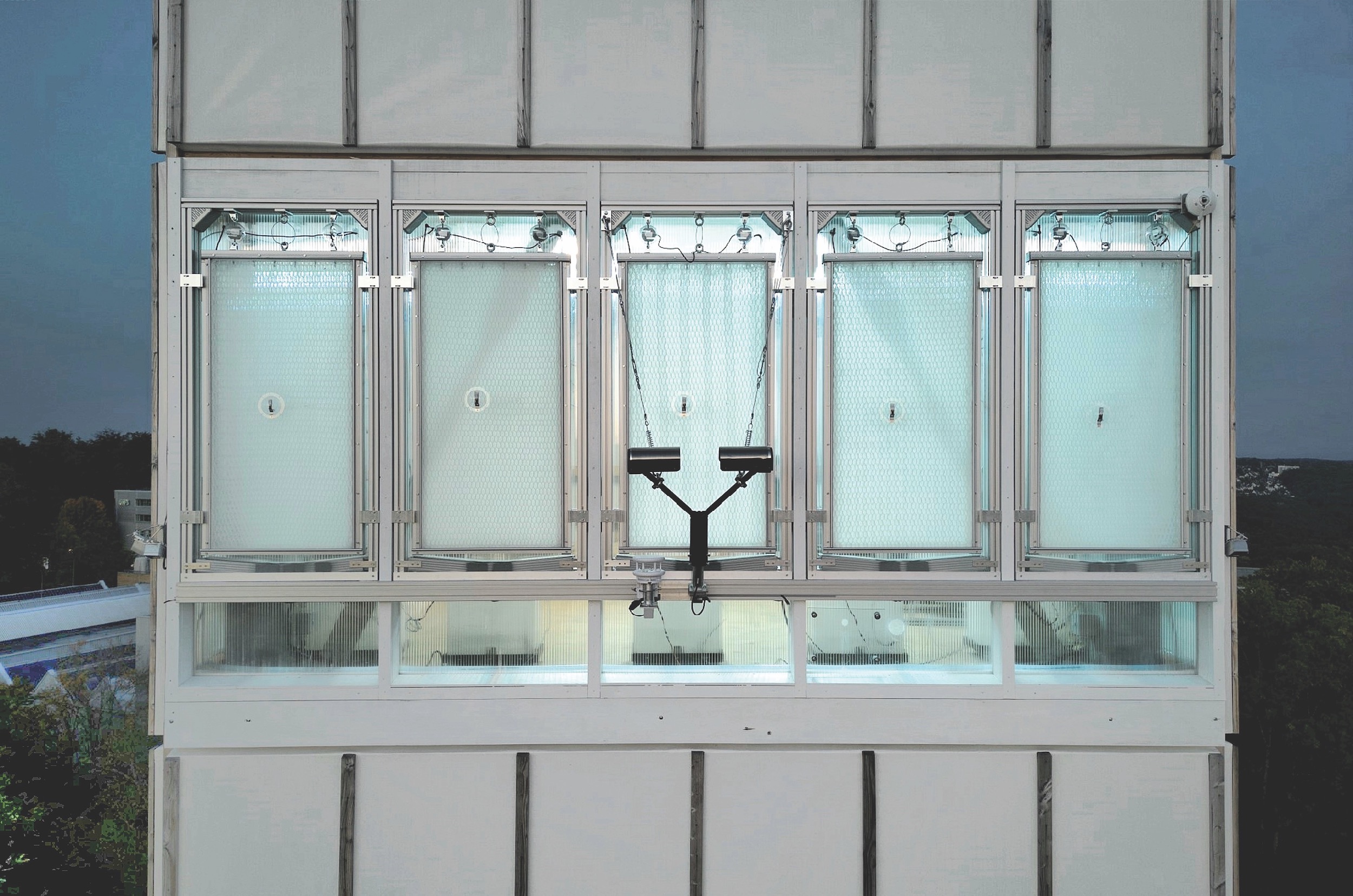Global urbanization and densification are giving rise to new thinking about how design can lower the impact of buildings on the heating of the planet. This is particularly true of high-rise buildings with glass façades that get scalding hot and generate heat islands. On buildings and other sealed surfaces, only about 10% of any rainwater that hits them evaporates; the rest of that precipitation typically ends up running into sewer systems in volumes that increasingly are leading to flooding.
One design and engineering solution to these problems is being explored at the University of Stuttgart in Germany, where researchers last October presented what they claim is the first hydroactive façade that moderates the temperature of exterior walls and interiors of buildings by absorbing rainwater that the system releases on hot days for evaporative cooling.
“It’s a milestone in the adaptation of the built environment to the urgent challenges of our time,” proclaims Christina Eisenbarth, a Research Assistant at the university’s Institute of Lightweight Structures and Conceptual Design (ILEK), and the façade’s inventor.
Dubbed HydroSKIN, the façade consists of an external, multilayered 3D textile that acts as a water collector and evaporator. Here’s how it works, according to research abstracts that ILEK released last fall:
- Its first layer is a water-permeable mesh or knitted fabric facing the outside that lets water in and filters out impurities and insects.
- A second inner layer is a water-transporting spacer fabric whose pile threads mobilize incoming and outgoing water and provide an open porous structure with a large surface area for air circulation and facilitating evaporation.
- A third layer can be integrated into the system to optimize water storage and evaporation performance. A water-bearing fourth layer, which might be a foil, is on the inside and provides water drainage and collection.

The layers are assembled by a force fit and are fixed into a frame profile by means of a waterproof Keder fabric.
The thickness of the textile- and film-based envelope system can vary between 20 and 60 mm, depending on environmental conditions and performance requirements. Depending on wind-driven rain yields, the depth of the frame profile’s water supply and discharge conduits might range from 50 to 100 mm.
HydroSKIN is well suited for high-rise buildings
Researchers have tested their concept in the lab and on buildings in Stuttgart and Singapore. At press time Eisenbarth was in Australia preparing to test HydroSKIN on buildings in Sydney.
The findings so far support the efficiency of the façade and its potential for high-rise buildings. For example, research found that above building heights of 29 meters, the total square-meter-related wind-driven-rain (WDR) yields striking a façade surface exceeded vertically falling precipitation yields per square meter. In other words, more rain can be absorbed by the façade than by a roof surface of the same size, and this disparity becomes even more pronounced at higher elevations.
In lab tests, researchers demonstrated a temperature reduction of about 10 degrees due to the effects of evaporation via HydroSKIN. Initial measurements last September on the world’s first adaptive high-rise building, at the University of Stuttgart’s Vaihingen campus, “suggest the cooling potential is even significantly higher,” says Eisenbarth.

Last year, a prototype installation and meteorological evaluation of five different HydroSKIN prototypes was conducted on the 10th level of this 12-floor, 36.5-meter campus high-rise. In 2023, there will be further testing of HydroSKIN on the building’s 9th level in combination with a unitized glass façade that will integrate textile insulation and other functional layers into the system.
BD+C was unable to ascertain how close HydroSKIN is to becoming commercially viable. (The results from the testing in Australia should be ready sometime this summer, says Dr. Walter Haase, ILEK’s Managing Director and Head of Working Groups.) But it is ILEK’s contention that this system could be retrofitted onto any façade surface of new or existing buildings.

For one thing, its mass—between one kilogram per square meter dry to five kg/sm saturated—compares favorably to other façade infill materials such as cellular concrete (~150 kg/sm), wood-panel construction (~125 kg/sm), thermal insulation composite systems (~63 kg/sm), or even triple glazing (~45 kg/sm). In addition, HydroSKIN is designed to be aesthetically unobtrusive, and its layers are framed in a profile that allows for easy disassembly and recycling of all components.
While HydroSKIN’s long-term suitability has yet to be proven, ILEK has manufacturers lined up to make it, says Eisenbarth.
Related Stories
| Dec 17, 2010
Gemstone-inspired design earns India’s first LEED Gold for a hotel
The Park Hotel Hyderabad in Hyderabad, India, was designed by Skidmore, Owings & Merrill to combine inspirations from the region’s jewelry-making traditions with sustainable elements.
| Dec 17, 2010
Cladding Do’s and Don’ts
A veteran structural engineer offers expert advice on how to avoid problems with stone cladding and glass/aluminum cladding systems.
| Dec 7, 2010
Product of the Week: Petersen Aluminum’s column covers used in IBM’S new offices
IBM’s new offices at Dulles Station West in Herndon, Va., utilized Petersen’s PAC-1000 F Flush Series column covers. The columns are within the office’s Mobility Area, which is designed for a mobile workforce looking for quick in-and-out work space. The majority of workspaces in the office are unassigned and intended to be used on a temporary basis.
| Nov 2, 2010
Cypress Siding Helps Nature Center Look its Part
The Trinity River Audubon Center, which sits within a 6,000-acre forest just outside Dallas, utilizes sustainable materials that help the $12.5 million nature center fit its wooded setting and put it on a path to earning LEED Gold.
| Oct 13, 2010
Prefab Trailblazer
The $137 million, 12-story, 500,000-sf Miami Valley Hospital cardiac center, Dayton, Ohio, is the first major hospital project in the U.S. to have made extensive use of prefabricated components in its design and construction.
| Oct 13, 2010
Hospital tower gets modern makeover
The Wellmont Holston Valley Medical Center in Kingsport, Tenn., expanded its D unit, a project that includes a 243,443-sf addition with a 12-room operating suite, a 36-bed intensive care unit, and an enlarged emergency department.
| Oct 13, 2010
Biloxi’s convention center bigger, better after Katrina
The Mississippi Coast Coliseum and Convention Center in Biloxi is once again open for business following a renovation and expansion necessitated by Hurricane Katrina.
| Oct 13, 2010
New health center to focus on education and awareness
Construction is getting pumped up at the new Anschutz Health and Wellness Center at the University of Colorado, Denver. The four-story, 94,000-sf building will focus on healthy lifestyles and disease prevention.
| Oct 13, 2010
Community center under way in NYC seeks LEED Platinum
A curving, 550-foot-long glass arcade dubbed the “Wall of Light” is the standout architectural and sustainable feature of the Battery Park City Community Center, a 60,000-sf complex located in a two-tower residential Lower Manhattan complex. Hanrahan Meyers Architects designed the glass arcade to act as a passive energy system, bringing natural light into all interior spaces.
| Oct 13, 2010
Community college plans new campus building
Construction is moving along on Hudson County Community College’s North Hudson Campus Center in Union City, N.J. The seven-story, 92,000-sf building will be the first higher education facility in the city.

















